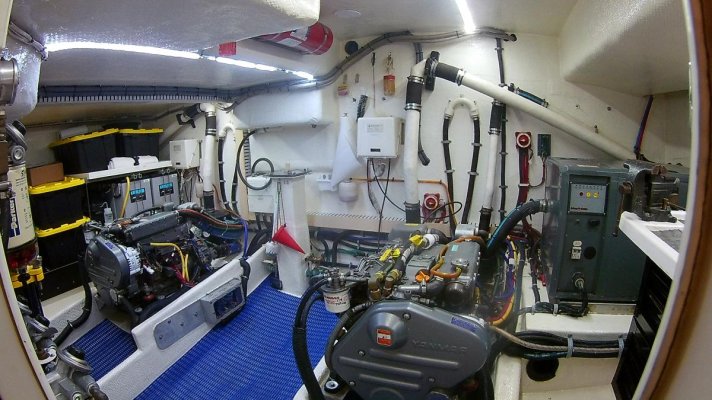AdkChris
Senior Member
Trying to make sense of the wide range of engines I am seeing in trawlers of what looks like similar size and weight.
Is there any way to estimate how much power it will take to move a boat thru the water at 70 or 100 percent of hull speed?
Is there a listing of the BSFC, Brake Specific Fuel Consumption for likely trawler engines?
Seems the optimal engine for a trawler would be developing maybe 50 to 75 percent of rated horsepower at cruise speed. This would provide extra power if needed and not work the engine hard enough to reduce life expectancy. I would think oversize motors just add weight, take up room and never get into their optimal operating range.
This is for doing the Great Loop so I don’t expect huge storms or tidal surges. I just want to go far and have money left for other things.
Thanks
Is there any way to estimate how much power it will take to move a boat thru the water at 70 or 100 percent of hull speed?
Is there a listing of the BSFC, Brake Specific Fuel Consumption for likely trawler engines?
Seems the optimal engine for a trawler would be developing maybe 50 to 75 percent of rated horsepower at cruise speed. This would provide extra power if needed and not work the engine hard enough to reduce life expectancy. I would think oversize motors just add weight, take up room and never get into their optimal operating range.
This is for doing the Great Loop so I don’t expect huge storms or tidal surges. I just want to go far and have money left for other things.
Thanks

